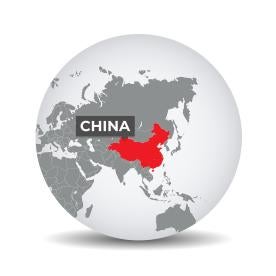On June 1, 2021, the Fourth Amendment to the Chinese Patent Law became effective. An important part of the amendment is the introduction by Article 76 of the patent linkage system in China – a system for litigation of drug patents prior to market entry of generics, similar to that provided by the Hatch Waxman Act in the US. On July 4, 2021, the National Medical Products Administration (NMPA) of China and the China National Intellectual Property Administration (CNIPA) jointly issued the Measures for the Implementation of Early Resolution Mechanisms for Drug Patent Disputes (“Measures”), which provide more details on how litigations are handled under the patent linkage framework.
How has this new legislation impacted foreign patent holders? Has the Chinese Patent linkage framework worked as designed? On the occasion of the second year’s anniversary of the Chinese patent linkage, we will try to answer the above questions.
Overview of the Patent Linkage System
According to the Measures, the party that hold the patent rights to commercialize a drug product – the “marketing authorization holder” (MAH) – needs to register certain types of patents related to its approved drug on the Patent Information Registration Platform, which was also established by the patent law amendment.
Under the patent linkage system, when a generic drug applicant submits an application for marketing authorization in China, it must make one of four types of declarations about the relevant patents of the corresponding brand drug listed on the Patent Information Registration Platform, which are similar to Paragraph IV certifications made by ANDA applicants in the United States. In China, there are “Type 4” declarations, which include Type 4.1 (there is a relevant patent listed on the platform, but the patent should be declared invalid) and Type 4.2 (there is a relevant patent listed on the platform, but the generic product does not fall into the scope of the patent) declarations.
Under the patent linkage framework, the first generic applicant who has (1) successfully challenged a brand drug’s patent, and (2) is the first approved to enter the market in China, can enjoy a 12-month market exclusivity period. During this period, the Chinese National Medical Products Administration (NMPA) may still review but will not approve other generic drug applications (except for co-challengers).
The patentee who has objections to a generic applicant’s Type 4 declaration has 45 days from the publication date of the generic application to file a lawsuit in a court or to request the China National Intellectual Property Administration (CNIPA) to make an administrative ruling as to whether the generic drug’s technical specifications fall into the scope of the relevant patent. The filling of such an objection initiates a 9-month stay of the generic drug’s regulatory approval.
China’s patent linkage framework covers not only chemical drugs (small molecule drugs), but also biological products and traditional Chinese medicine products.
The First Patent Linkage Litigation in China
On August 5, 2022, China’s Supreme People’s Court issued the landmark decision in Chugai Pharmaceutical Co., Ltd. v. Wenzhou Haihe Pharmaceutical Co., Ltd. (“Chugai v. Haihe”). This is the first patent linkage litigation in China since the establishment of the patent linkage system.
Chugai was the patentee and marketing authorization holder of Eldecalcitol Soft Capsules for treating osteoporosis, which first launched in Japan in 2011 and was later approved by China’s NMPA in 2020. Chugai is also the patentee of the Chinese Patent ZL200580009877.6 (“ZL877”), which was registered on the Patent Information Registration Platform on July 13, 2021. Haihe submitted its marketing approval application of a generic version of the Eldecalcitol Soft Capsules and a Type 4.2 declaration, claiming that the generic product does not fall within the protection scope of the ZL877 patent.
Chugai sued Haihe at the Beijing Intellectual Property Court (BIPC), which accepted the case on November 8, 2021. On April 15, 2022, the BIPC issued a decision, dismissing the case in favor of Haihe. As background, in a separate invalidation proceeding brought by Haihe against ZL877 patent, Chugai amended claim 1 of the patent to narrow the element “antioxidant” to a single antioxidant “d1-α-tocopherol.” Haihe asserted that its generic product uses an antioxidant that is not d1-α-tocopherol but is one of the antioxidants listed in the original specification of Chugai’s patent. Accordingly, in this case, Haihe asserted that its product does not fall into the ZL877’s protection scope. Chugai argued for infringement by equivalence. The BIPC rejected Chugai’s argument, stating that by the amendment to claim 1, Chugai has surrendered the antioxidants disclosed in the specification but not recited in the claim. The court held that the technical solutions of Haihe’s generic product are neither the same nor equivalent to the technical solutions of the ZL877 patent, and thus the generic product falls outside of the ZL877 patent’s protection scope.
Chugai appealed the BIPC’s decision to China’s Supreme People’s Court (SPC), which affirmed the BIPC’s decision in August 2022. On appeal, the SPC considered whether the technical solutions of the antioxidant in Haihe’s generic product are equivalent to the technical solutions of Chugai’s ZL877 patent. According to the estoppel doctrine under Article 6 of the Supreme People’s Court Patent Infringement Case Judicial Interpretation, courts do not support patent infringement claims made on technical solutions that have been waived by the patentee during patent authorization and invalidation procedures. Here, the SPC agreed with BIPC that by amending the claim, Chugai limited the scope of “antioxidant,” and had given up the protection of the antioxidant used in Haihe’s generic drug. Accordingly, the court found that Haihe’s generic product falls outside of the ZL877 patent’s protection scope.
During the litigation process, the BIPC and SPC completed their review and issued the decisions within the 9-month timeline.
It is worth noting that the courts did not dismiss the case simply on the ground that the ZL877 patent was invalidated by CNIPA and an appeal was pending, and still considered whether the generic product falls into the patent’s protection scope.
Recent Patent Linkage Litigations
Since Chugai v. Haihe, more patent linkage cases have been litigated in courts. Some of the most recent decisions are summarized below.
In Novartis AG v. Suzhou Thery Pharmaceutical Co., Ltd. (“Novartis v. Thery”), determined in November 2022, generic applicant Thery filed a Type 4.1 declaration against Novartis’s patent ZL201080051819.0 (“ZL819”) related to Tasigna (nilotinib hydrochloride). The BIPC found the ZL819 patent valid. However, the court agreed with Thery’s claim construction regarding the feature “dispersed in apple sauce,” and held that the claims only cover the manufacture of a medicament where nilotinib is dispersed in applesauce, but not the scenarios where nilotinib is sold together with applesauce, or nilotinib is sold alone with drug description indicating that the drug can be dispersed in applesauce. Accordingly, the court held that the patent does not cover Thery’s generic product.
In Merck Sharp & Dohme v. Qilu Pharmaceutical Co., Ltd. (“MSD v. Qilu”), determined by BIPC in November 2022, generic applicant Qilu filed a Type 4.2 declaration against MSD’s patent ZL200680047103.7 (“ZL103”) related to Selegiline Metformin (II). Claim 1 of the ZL103 patent is directed to “a pharmaceutical composition comprising: (a) 3 to 20% by weight of sitagliptin, or a pharmaceutically acceptable salt thereof; (b) 25 to 94% by weight of metformin hydrochloride; (c) 0.1 to 10% by weight of a lubricant; and (d) 0 to 35% by weight of a binding agent; and (e) 0.5% by weight of a surfactant.” The BIPC confirmed that the technical solutions of the generic product do not fall within the scope of the ZL103 patent. The court found that, regarding the amount of the surfactant, the specification recites a range of 0 to 3%, while during prosecution, MSD limited the surfactant amount to a point value 0.5% with an argument stating that the addition of 0.5% by weight of a surfactant to the formulation was particularly useful for solving the technical problem. Applying both the estoppel rule and the doctrine of equivalents, the court held that the generic applicant’s product does not fall into the scope of the ZL103 patent.
Novartis AG v. Chia Tai-Tianqing Pharmaceutical Holdings Co., Ltd. (“Novartis v. Chia Tai”) is another patent linkage case determined by BIPC. In this case, generic applicant Chia Tai filed a Type 4.1 declaration against Novartis’ three patents ZL200780004302.4, ZL201310425110.8, and ZL200680051365.0 related to Everolimus, declaring the patents at issue invalid. In a separate proceeding, Chia Tai filed invalidation petitions at the CNIPA against the three Novartis patents, which were declared invalid. The invalidation decision was appealed by Novartis to the BIPC and was pending when BIPC decided this case. In this case, Novartis requested that the court determine whether Chia Tai’s generic product falls into the scope of the three Novartis patents. The BIPC refused to consider this issue while the appeals of the invalidation decision were pending, citing Article 2 of the Judicial Interpretation of the SPC on trialing patent infringement dispute cases, which provides that for a case based on a patent that has been declared invalid by the CNIPA, a court could deny the case. The court stated that if the invalidation appeals were reversed, Novartis could then still sue Chia Tai for infringement.
Although most of the patent linkage court decisions so far are in favor of generic applicants, in AstraZeneca plc v. Sichuan Guowei Co. Ltd. (“AstraZeneca v. Guowei,” decided in June, 2023), the Supreme People’s Court (SPC) issued a final decision partially in favor of brand company AstraZeneca related to the drug dapagliflozin (brand name Forxiga). This is the first case in which the SPC found a generic applicant’s product falls into the scope of a brand company’s patent. Forxiga is a drug for treating type II diabetes and was first approved in China in 2017. The SPC’s decision ruled on three patent linkage disputes between AstraZeneca and Guowei related to patents ZL200880016902.7, ZL201210201489.X, and ZL200780024135, respectively. For two of the patents (ZL200880016902.7 and ZL201210201489.X), the SPC disagreed with Guowei’s construction of the term “immediate release” and affirmed the BIPC’s decision that Guowei’s product falls into the scope of the independent claims. For the third patent ZL200780024135, the SPC held that this patent cannot be used in patent linkage litigation because it is a crystalline form patent.
Conclusion
The patent linkage system in China is still in its early stage of development. Currently, it appears that most of the courts’ rulings are in favor of generic applicants. With more litigations to be filed and determined, it stands to be seen how this system will evolve for both innovators and generic applicants. It will also be interesting to see how the system is applied in disputes related to biologic products.




 i
i